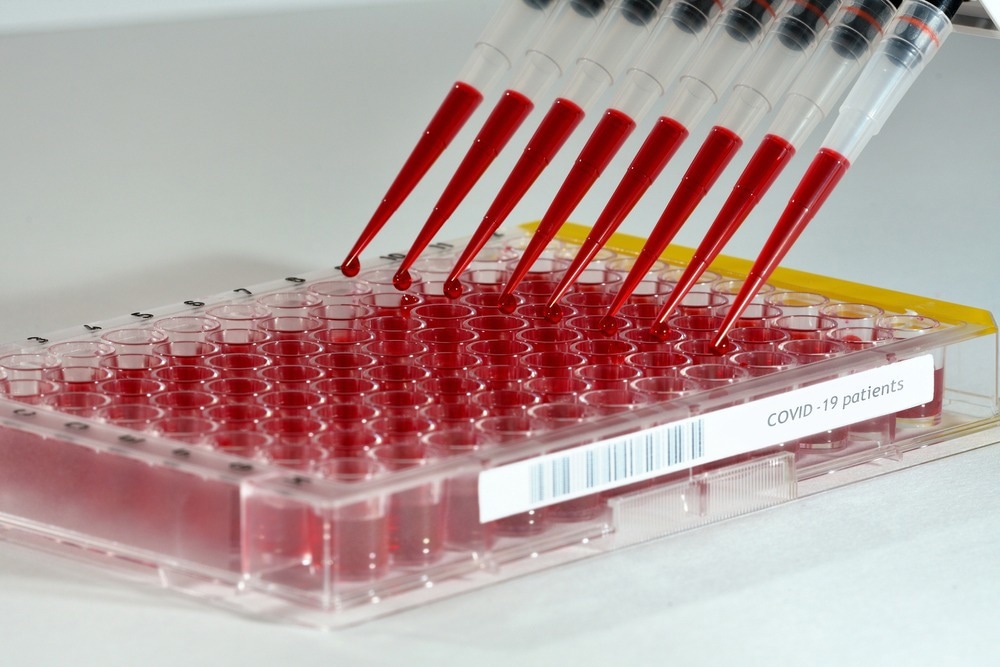High throughput screening (HTS) can be described as an automated process that is able to identify active compounds at an accelerated level. This can be useful for drug discovery as the results provide a strong starting point for developing drug design. This can lead to a high level of comprehension and knowledge of mechanisms of action and interaction of biochemical processes that drug compounds can impact.

Image Credit: Sven Weyer/Shutterstock.com
As high throughput screening is automated, it can enable testing of a large number of compounds or even a specific biological target, which is more effective than reliance on human counterparts due to the high speed and lack of human error.
HTS strategies
HTS strategies are used within the pharmaceutical industry to discover drugs. By increasing the speed of analysis of biological targets and compounds, large-scale compound libraries can be screened using a cost-effective approach. This tool can be used for pharmacological targets, profiling agonists, as well as antagonists for receptors and enzymes.
The goal of HTS is to assess candidates that affect the biological target in the most effective way, which can be referred to as 'hits'. This process can consist of liquid handling devices, robotics, and plate readers that can also be used as detectors, as well as the software used for processing data.
The hits or leads that HTS can provide are typically used as a suggestion for optimization purposes. However, this process cannot evaluate compounds' toxicity and bioavailability. This is why HTS is the potential starting point for drug discovery, as it cannot be typically used for identifying drugs due to the many other properties that also require analysis.
Research Limitations
HTS has been enabled by modern advancements in other fields, such as robotics. A highly specialized and expensive screening facility may be required to effectively undertake this process. While this process can be beneficial for many researchers for the purpose of drug discovery, the expenditure that is associated with the process prevents this technology from being accessible to every laboratory.
This can limit research and lead to disadvantages, such as increasing the time for laboratories to progress to the next drug discovery stage. This can be limiting, not only for the researchers but for the scientific community and even society as a whole, as it can prevent the progression of drug development of more effective candidates, which would have been more impactful for disease research.

Image Credit: PopTika/Shutterstock.com
Global Disease Burden
Researching disease as well as potential treatments for disease is a global scientific objective, and research into drug discovery and development can aid in reducing the global disease burden.
The World Health Organization (WHO) has outlined ten global causes of mortality in 2019, with ischemic heart disease and stroke being the first and second on the list.
Using advanced automated technology, such as high throughput screening, can increase the research rate of scientists undertaking drug discovery research. Starting this process with a comprehensive analysis of drug compounds can progress their starting point further than laboratories without HTS.
This can increase the likelihood of researching the most effective drug candidates, which can also increase the probability of the drug being given FDA approval. Subsequently, this can also impact the number of treatments that are available for various diseases, which can alleviate the global disease burden as well as provide patients with a higher quality of care and a better prognosis.
Future Outlook
High throughput screening is an experimental process that can rapidly test thousands and even millions of samples for their biological activity, which can be used to advance the drug discovery procedure.
This process aims to screen 10,000 or more samples per day and can lead to suggestions of 'hits', compounds with a desired biological activity, such as against biological targets. This is useful for disease research as it can optimize and streamline the drug discovery process by progressing the starting point of researchers. This ensures that researchers are not wasting resources and time on less effective compounds.
Reducing the waste of resources and time for pharmaceutical companies and researchers can also ensure they are not wasting money, as researching drugs for development can be very costly. Any optimization can lead to a more efficient cost-versus-benefit calculation by pharmaceutical companies and result in the potential development of more than one drug within clinical trials.
This can impact disease prevention and aid in prioritizing different areas of disease, which would be very beneficial for patients burdened with disease. With more drugs being analyzed and developed, patients can be provided with more effective treatment options that provide them with a better quality of life.
Continue Reading: Computational Methods in Drug Discovery
Sources:
- Blay V, Tolani B, Ho S, Arkin M. High-Throughput Screening: today's biochemical and cell-based approaches. Drug Discov Today. 2020;25(10):1807-1821. doi:10.1016/j.drudis.2020.07.024
- Carnero A. High throughput screening in drug discovery. Clinical and Translational Oncology. 2006;8(7):482-490. doi:10.1007/s12094-006-0048-2
- Global Health Estimates: Life expectancy and leading causes of death and disability. Who.int. https://www.who.int/data/gho/data/themes/mortality-and-global-health-estimates. Published 2022. Accessed July 19, 2022.
- High-throughput screening (HTS) | BMG LABTECH. Bmglabtech.com. https://www.bmglabtech.com/en/blog/high-throughput-screening/. Published 2022. Accessed July 19, 2022.
Further Reading
Last Updated: Nov 25, 2022